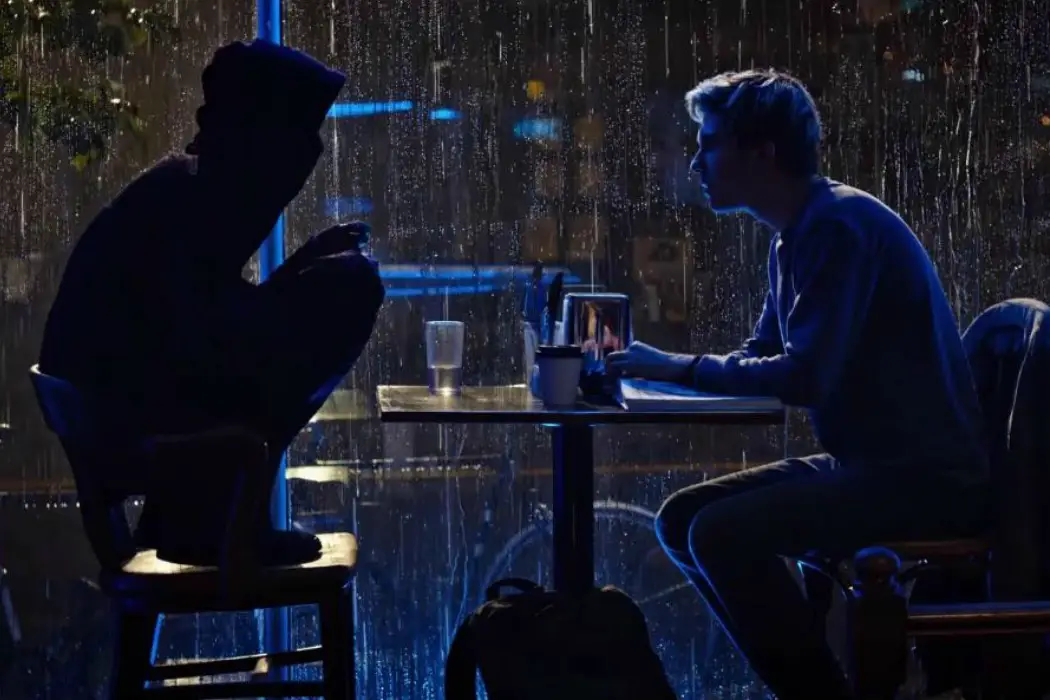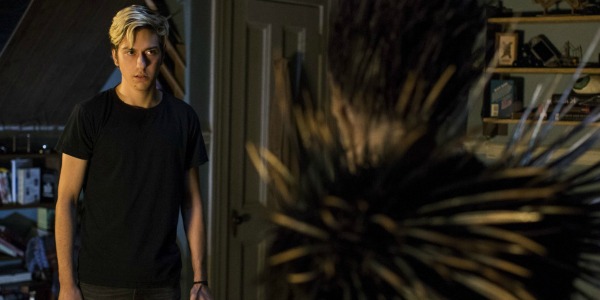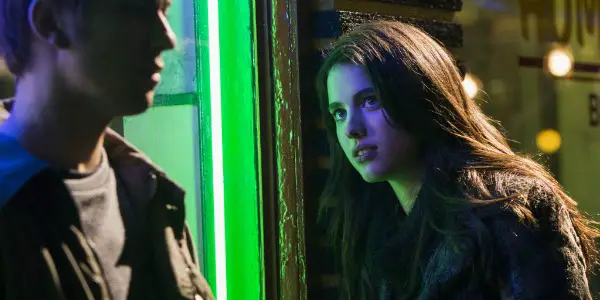DEATH NOTE: Stylish, Gory & Joyously Silly

Alistair is a 25 year old writer based in Cambridge.…
The original Death Note anime has a sense of kookiness that is quintessentially Japanese. Sure, it’s easy to summarise as an intricate tale of cat and mouse between a serial killer and a detective – but it does also contain a God of Death addicted to eating apples aiding the killer’s spree, while the detective is hooked on eating copious amounts of candy in order to keep his brain buzzing along.
When transplanted overseas, the more surreal character details should need to be toned down for the story to be somewhat palatable to Western audiences, while still staying true to the underlying, suspenseful narrative.
A Twisted Teen Movie
It’s easy to imagine that transplanting a story about death and the consequences of murder to the US, especially in an era when the president is fixated on being tough on crime, would lead to a gritty reboot of the source material that perfectly reflects the nation’s shifting attitude to criminality and its punishment. In a country that still has the death penalty, a story about a mass murderer with a desire to create a “perfect world” free of crime (as he explicitly was in the source material) should have horrifying new implications when transplanted across the Atlantic, especially in a turbulent political climate.

Instead, Adam Wingard’s adaptation of Death Note takes a different direction altogether, removing the gritty edges from the story in order to make a deliriously gory teensploitation movie that shares an equal amount of connective tissue with the Final Destination franchise as it does Tsugumi Ohba’s original manga. It no longer resembles a supernatural twist on a paranoid cat and mouse thriller, so much as it feels like a psychopathic reimagining of the textbook YA franchise movie. What’s even more surprising is that, for all its obvious faults, Wingard has directed a movie that is surprisingly enjoyable, racing through an entire franchise’s worth of narrative at a breakneck speed I couldn’t help but wish more blockbusters would adopt as their default storytelling mode.
Nat Wolff stars as Light Turner, the highly intelligent son of a Seattle detective, who mere moments after the film’s opening, picks up a “Death Note” that falls from the sky. The book contains a plethora of rules, all revolving around one fact – write a person’s name in that book and they will die, and more enticingly, you get to choose how. After decapitating a school bully and causing the guy who murdered his mum to impale himself, Light immediately tells a girl at his school (Margaret Qualley) about his God-like powers, leading the pair to soon become obsessed and triggering a wave of 400 murders around the world.
Leaving messages attributing the crimes to “Kira” (Japanese for Killer, and Russian for Light), an oddball detective named L (Lakeith Stanfield) traces the crimes back to Seattle, and is soon accusing Light of fitting the bill for this series of murders. Oh, and Light is repeatedly visited by a mocking God of Death named Ryuk, voiced by Willem Dafoe, channelling Mark Hamill’s Joker.
Whitewashing isn’t the biggest problem – the lead actor is
Before I go further into this review, it’s time to address why it has received so much criticism from fans of the original anime in the months leading up to release – and that is the whitewashing of the lead role. This year’s Ghost in the Shell reboot, for example, attempted to address its own whitewashing controversy via the poor decision of introducing a whitewashing based twist into the narrative itself, leading to the sound of faces hitting palms in multiplexes across the globe.

Wingard’s approach is to never mention it, presumably because the supporting cast is multicultural enough to display that he didn’t have any negative intentions in his casting decisions. However, as Asian-Americans are repeatedly ill-served by casting directors, the oversight in casting is worth being exasperated over – especially as Wolff’s awful performance in the lead is the one element of the film that is worthy of the mass criticism the project has received altogether.
Wolff’s Light Turner is, without a doubt, one of the most irritating protagonists in recent memory, but this isn’t due to the screenplay. He is written by design as a high school student who makes repeated terrible decisions, falling deeper and deeper in to the hands of the authorities due to his poor attempts at remaining hidden. But when portrayed by Wolff, the emotions as written are telegraphed extremely poorly, and there is no discernible chemistry between him and any of the other characters.
Heck, he can’t even do basic reactions – his histrionic screaming when Ryuk first appears is some of the most wooden acting of the year, which could be forgiven seeing as he’s acting against a motion captured performance. The only issue is he has the same tone deaf approach to interactions with the rest of the cast too.
Luckily, the rest of the ensemble more than make of for the failings of the lead performance – not least Stanfield, whose knack for offbeat comic rhythms was perfected in Donald Glover’s FX series Atlanta, who manages to turn L in to one of the most thrillingly unusual film detectives in history. The extremely mannered line readings may prove off putting, but when placed next to the lead performance, it’s clear there is a method to Stanfield’s madness – and many viewers will leave wishing the story was being told from the oddball detective’s point of view.

If you cast aside the central performance, there is plenty to like in Death Note – not least the fact it is directed with stylish, throwback aplomb by Wingard. This is the director’s biggest budget film to date, yet is something of a return to his usual style after his detour into found footage horror with last year’s severely underrated Blair Witch.
There are many scenes stylised in a manner reminiscent of his fantastic 2014 film The Guest, utilising a synth-heavy, Carpenter-esque score from Atticus Ross and Leopold Ross as well as plenty of throwback anthems from the likes of INXS and Air Supply. A paranoid sequence at a high school dance, as well as a cliffhanger ending that hits straight out of the left field, both feel of a piece with the climactic sequences of Wingard‘s earlier film – even if this style over substance romp never fully manages to be as tense.
Death Note: Conclusion
Death Note is a fun adaptation of its source material, albeit one that overcompensates for its lack of substance with an irresistible stylish energy. It has plenty of faults, but watched with the brain firmly in the “off” position, it becomes easy to enjoy – especially as it manages to feel more cartoonish than the anime it’s based on.
Death Note has proved controversial – but what did you think of it? Are there any other good Western anime remakes?
Death Note is now streaming on Netflix across the globe, so why not give it a try?
Does content like this matter to you?
Become a Member and support film journalism. Unlock access to all of Film Inquiry`s great articles. Join a community of like-minded readers who are passionate about cinema - get access to our private members Network, give back to independent filmmakers, and more.
Alistair is a 25 year old writer based in Cambridge. He has been writing about film since the start of 2014, and in addition to Film Inquiry, regularly contributes to Gay Essential and The Digital Fix, with additional bylines in Film Stories, the BFI and Vague Visages. Because of his work for Film Inquiry, he is a recognised member of GALECA, the Gay & Lesbian Entertainment Critics' Association.













